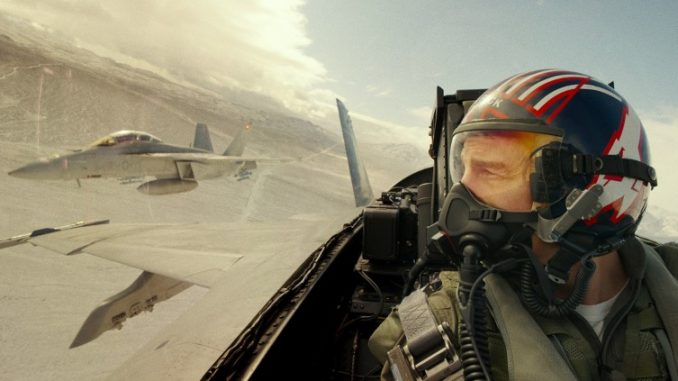Advertisement

After paying my $8.50 to see Top Gun: Maverick Last weekend my local cineplex inadvertently enhanced my appreciation for the film. The audio cut out for three minutes and with no dialogue, I was immediately drawn in by the rising jets, the hyper-caffeinated cast and its star’s enduring charisma. Then the sound returned, the story unfolded, and reality set in: This isn’t really a plot, but a superbly crafted business plan, half video game, half military recruiting film. It’s the perfect structure for a Tom Cruise genre-bashing blockbuster.

Historians might ultimately call the film a turning point – the film that reignited audiences, young and old, to pay homage to their movie palaces. Film critics may point that out as well top gun Sequel as a defiant reinvention of the classic war genre.
Can it compete with the classics? Sure it does, but only Cruise would set out to craft a battle epic that lacks a specific enemy and thus a focused root interest. Or that marginalized danger, sex and even gore – all that characterizes war films going backwards ways of glory.
War movies are built around a mission, and Cruise is tasked with training two teams of F-18 pilots to navigate through mountainous terrain and take out a uranium enrichment plant (we don’t know whose). Will Cruise survive the attacks from these anonymous jet pilots heading towards him? Will he and his students face challenges beyond intense, waist-deep soccer matches played on a quiet beach?
Sure they will. But the release date of Top Gun: Maverick also coincided with the release of a new book that once again reminds us of the ‘classic’ approach to war films – in this case a film titled The best years of our lives. The driving force behind it was Samuel Goldwyn, a legendary independent producer who was the polar opposite of Cruise personally and professionally.
By 1944, Goldwyn was weary of both war and war films, but fascinated by the traumas faced by returning veterans trying to reintegrate into small-town America. The war had essentially destroyed them. In furthering his project, Goldwyn took the steps dictated by filmmakers of the time: he bought the film rights to a best-selling novel entitled glory to me by MacKinley Kantor. He then paid Kantor to write a screenplay, even though his novel was written in blank verse.
Disappointed with the result, Goldwyn next turned to an accomplished playwright, Robert E. Sherwood, to work under the supervision of respected filmmaker William Wyler (roman vacation). The new screenplay was exemplary, if somewhat literary. But also as best years In pre-production, Goldwyn found himself in talks with stars such as Fredric March, Dana Andrews and Myrna Loy, warning them that they would be playing characters who are badly damaged, even suicidal. One recruit was Harold Russell, whose actual war injury caused him to wear hooks where his hands had been in the film.

Everett
Stubborn and iconoclastic, Goldwyn ignored rumors that his film would be too dark for theatrical audience. Joseph Breen, the prudish head of production code, decreed that the film’s first cut was also too sexy; He even timed the kissing scenes with a stopwatch.
Her fears turned out to be wrong: the film became a critical and box-office hit, winning seven Oscars including Best Picture (its impact will be explored in Alison Macor’s new book, Make the best years of our lives).
Sure, nearly a century later, Tom Cruise would take a very different path in developing his film. There would be no best-selling novel; not a major playwright. Several layers of writers were invited to contribute loner: Credits lists five who based their work on characters created by two other authors, who in turn were “inspired” by real people featured in a 1982 magazine article.
The final product not only had to pass the code (or its contemporary equivalent), but also the Department of Defense’s harsh media office.
The solution of geopolitical questions remains ambiguous. China’s censors, always sensitive to war films, have so far neither approved nor disapproved Cruise’s blockbuster, while Tencent, a major Chinese financier, quietly backed out of its important financial commitment early in production.
Did the movie work? It has scored solid points on the charts, reflecting its acceptance by audiences and critics. Critics, on the whole, have given Cruise credit for his impressive filmmaking skills. But as John Anderson wrote in the Wall Street Journalthe film compounded his concerns “about where the movies are going and the lack of creativity that’s coming to the screen.”
In a Cruise film, war is an exercise in detached hilarity. It’s not ominous foreplay best years. In a moment Top Gun: Mavericka supervisor studies Cruise’s confident grin and says, “I don’t like that look.” To which Cruise replies, “It’s the only one I have.”
“The Look” will be good enough to please millions of ticket buyers.

